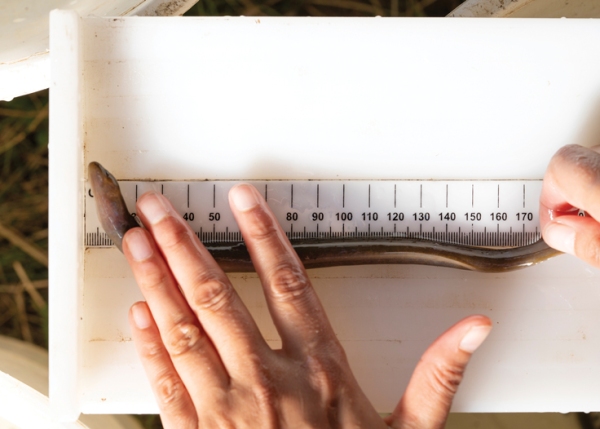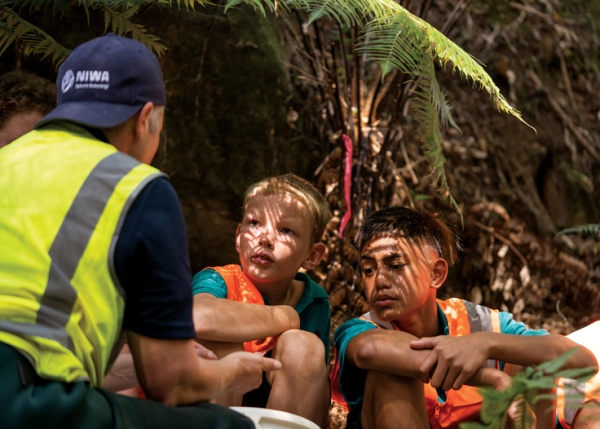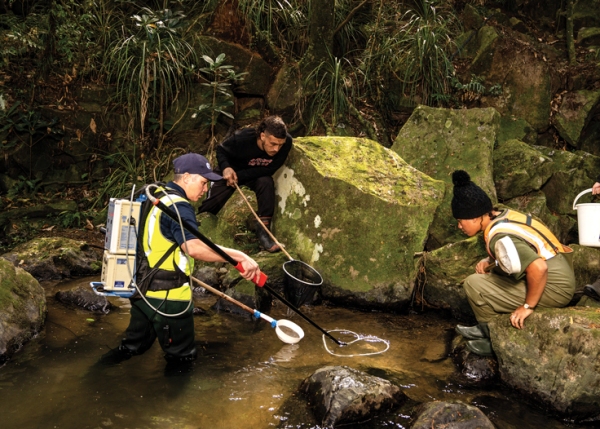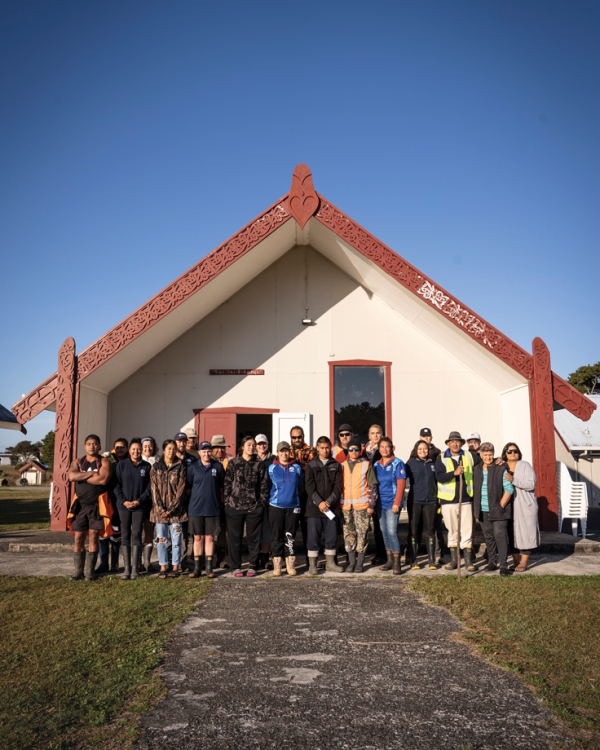Dr Erica Williams was hearing time and again from hapū partners about the impacts they were observing when they went to their awa to get food for the table.
“For some time they were reporting that the abundance and size of freshwater taonga species were declining,” says Williams, Pou Whakarae – Te Hiringa Taiao (Chief Scientist) of Te Kūwaha, NIWA’s Māori Environmental Research team.
Taonga species such as tuna (freshwater eel), kōura (freshwater crayfish) and kākahi (freshwater mussels) are central to the identity and wellbeing of many Māori communities.
But these species, which for generations have sustained Māori and helped transfer knowledge of customary practices from one generation to the next, were clearly in trouble.
Dr Williams says she was also getting a strong message that hapū wanted significant improvements in the management and restoration of freshwater and estuarine environments to help support the taonga species that live within them.
“My mentor, the late Matua Allan Halliday, wanted to know more about his rohe than any other agency so that their hapū were always in the front-foot position,” explains Williams.
“He wanted his hapū to develop the skillsets needed to influence change and to be acknowledged and respected as the experts of their rohe. It is his vision that sits at the heart of the Cultural Keystone Species (CKS) programme.”
The MBIE Endeavour-funded CKS programme included interlinked studies centred around understanding what causes stress to freshwater taonga species throughout their life. One focus was on juvenile life stages to maximise species survival through this vulnerable period.
“We have developed ways to communicate state and trends of these taonga populations, as well as frameworks to support hapū decision making in their management,” says Williams.
“It is all designed to meet the needs of our partnerships and to deliver new tools and knowledge that support the protection and restoration of freshwater taonga species.”
Members of Te Tai Tokerau (Northland) hapū collective Ngā Kaitiaki o Ngā Wai Māori (NKoNWM) have long been concerned about the declining tuna populations in their respective rohe. Over the last decade, NKoNWM have worked with Northpower, NIWA, Ministry for Primary Industries, Department of Conservation, and other agencies to move juvenile eels over the Wairua Falls power station as they swim upstream as part of their life cycle.
To test the success of the trap and transfer programme, each March NKoNWM and NIWA look at how the elvers that are being moved are surviving. The annual two-week survey involves catching juvenile eels in streams connected to the Wairua River to assess their numbers and distribution. The eels are caught using electric fishing techniques, identified, measured, and then promptly returned to the stream.
The survey is one of many projects within the CKS programme where mana whenua undertake the fundamental research required to inform their unique responsibilities as kaitiaki.
“This is the first time research of this type has been undertaken with our own hapū in our own rohe,” says Delaraine Armstrong, Chairperson for NKoNWM.
“This mahi keeps alive the tradition of kaitiaki looking after tuna and gives our seven hapū the opportunity to come together for the survey."
“Our tamariki and mokopuna join us as well and have the chance to learn from the research and mātauranga.”
Prior to the Wairua River elver surveys, very little research had been undertaken nationally to help explain what makes stream habitats suitable for elvers to thrive.
This multi-year survey, alongside other projects within the CKS programme, has significantly improved understanding of the factors that impact the survival of juvenile eels and what habitats are good for tuna.
The benefits for the hapū involved also extend beyond the immediate research results.
“With the support of NIWA we have recently completed the certification of nine electric fishers,” explains Armstrong.
“That has allowed us to develop our own independent waterways surveying capability which has recently led to the signing of a contract with the Living Water partnership. With the development of this expertise, we have provided career pathways for rangatahi to stay in the rohe.
“Our partnership with NIWA has enabled us to strengthen the hapū position as kaitiaki – working together to bring our weight to the mahi needed to clean up our waterways.”
Hapū-driven research, where it is co-designed and undertaken in a context relevant to the partner’s needs, sits at the heart of the CKS programme. The programme focused on building capability and capacity by helping the hapū partnerships further develop the skills they need to navigate the science and policy systems.
“It is about valuing mātauranga Māori alongside other science knowledge systems,” says Williams.
“It is also about taking every opportunity to build shared experiences, where hapū become comfortable working with scientists, and both partners build mutual understandings and capacity."
“More effort is needed to do this type of place-based, mātauranga-driven mahi. The benefits are almost unquantifiable, and the outcomes are valued by all parties so much more.”
In collaboration with the University of Waikato, the CKS team has also supported five graduate students and three summer research scholarship interns through a variety of practical experiences. These experiences include developing strong professional networks and understanding of the importance of partnerships between hapū/iwi, agencies, and research providers.
Williams says NIWA is also learning from the students.
“They bring fresh, new approaches to how research is conducted, the communication of research on social media platforms, along with their pre-existing talents in planning, photography and design.”
What’s the next challenge?
“There are very few datasets that are addressing issues impacting taonga species from a Māori perspective – focusing on species of importance to them, at locations and scales of importance to them,” says Williams.
“We have filled some of the holes, but have also exposed more gaps in the datasets that hapū need.”
She says NIWA is also continuing to evolve its approach to the co-design and co-delivery of Māori-driven research.
“We hope that funding agencies are ready for the next step in this journey as we seek to influence larger opportunities that are completely focused on Māori research needs and are led and delivered by hapū and iwi.”
Williams says the CKS programme would not have happened without kaumatua such as the late Matua George Tuhiwai, May Tito, and Allan Halliday.
“This programme and its outcomes are on the back of their efforts, leadership and vision. All of us wish that we had listened more."
“We all have much more to do to realise their vision.”
Milestones from the CKS programme include:
- Significant advances in understanding the water quality and habitat needs of juvenile tuna, kōura and kākahi
- New methods for undertaking state and trend analyses that are directed by mātauranga Māori and informed by hapū-driven datasets
- Research that enables improved tuna, kōura and kākahi restoration and management actions
- Publications available via Te Wai Māori website on the current state of taonga species and steps needed to improve management under a changing climate
- New taonga species booklets to provide accessible information about tuna, kākahi, īnanga, kōura, piharau, and kanae life cycles.
More information at niwa.co.nz/te-kuwaha
This story forms part of Water and Atmosphere - August 2021, read more stories from this series.




